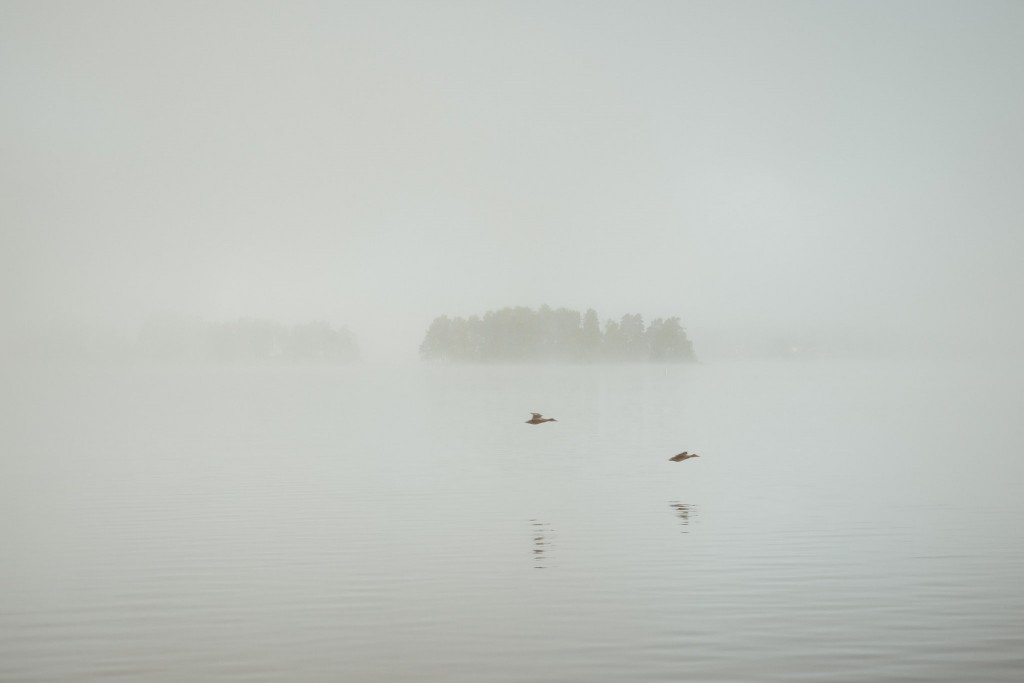![Risuaita Telkkämäki]()
Adobe just released Lightroom 5.7 update, which includes support for several new camera models.
One of the new models is Fujifilm X100T. As I do own the previous X100S model, I was wondering if the new model has a same sensor or if it is different. There’s no way to tell that from specifications, even though it looks very much like same one.
Then I had a out-of-the-box idea: Adobe does supply camera profile for each model, which describes how the sensor image colors map to Adobe Standard colors. Each sensor technology has different profile, and if the color profile matches, the sensor then has similar color rendition and most likely uses the same technology (same CFA, same analog circuitry). Of course, this is only Adobe’s interpretation, but I trust them to have direct communication with the camera manufacturers.
So, here’s a list of duplicate Adobe camera profiles, grouped together by those which are exactly same, apart from the model name. I find it interesting that Canon 6D and 70D have identical colors (while being physically different size) and this seems to confirm that Fujifilm X100S and X100T are indeed the same sensor.
UPDATE Dec 15, 2014
CameraRaw 8.7.1 was just released, which contains new profile for Sony ILCE-7M2 – also known as Sony Alpha 7 mk II. Again, this color profile is identical to previous A7 model.
Cameras with similar imaging sensors
Canon EOS 100D
Canon EOS 650D
Canon EOS 700D
Canon EOS M
Canon EOS 10D
Canon EOS 300D
Canon EOS 1200D
Canon EOS 600D
Canon EOS 6D
Canon EOS 70D
Canon EOS-1D C
Canon EOS-1D X
Canon PowerShot G1 X
Canon PowerShot G1 X Mark II
Epson R-D1
Epson R-D1s
Epson R-D1x
Fujifilm FinePix E550
Fujifilm FinePix F810
Fujifilm FinePix F550EXR
Fujifilm FinePix F600EXR
Fujifilm FinePix F770EXR
Fujifilm FinePix F700
Fujifilm FinePix F710
Fujifilm FinePix S20Pro
Fujifilm FinePix F900EXR
Fujifilm FinePix HS50EXR
Fujifilm FinePix HS20EXR
Fujifilm FinePix HS30EXR
Fujifilm FinePix S5100
Fujifilm FinePix S5500
Fujifilm FinePix X10
Fujifilm X-S1
Fujifilm XF1
Fujifilm X-E1
Fujifilm X-Pro1
Fujifilm X-E2
Fujifilm X-T1
Fujifilm X100S
Fujifilm X100T
Leaf AFi 54S
Leaf Aptus 17
Leaf Aptus 22
Leaf Aptus 54S
Leaf Valeo 11
Leaf Valeo 17
Leaf Valeo 22
Leaf AFi 65S
Leaf AFi 75S
Leaf Aptus 65
Leaf Aptus 65S
Leaf Aptus 75
Leaf Aptus 75S
Leaf C-Most
Leaf Valeo 6
Leaf Credo 40
Leaf Credo 60
Phase One IQ140
Phase One IQ160
Phase One IQ260
Leaf Credo 50
Phase One IQ250
Leaf Credo 80
Phase One IQ180
Phase One IQ280
Leica C (Typ 112)
Panasonic DMC-LF1
Leica D-LUX (Typ 109)
Panasonic DMC-LX100
Leica D-LUX 3
Panasonic DMC-LX2
Leica D-LUX 4
Panasonic DMC-LX3
Leica D-LUX 5
Panasonic DMC-LX5
Leica D-LUX 6
Panasonic DMC-LX7
Leica D-Lux2
Panasonic DMC-LX1
Leica DIGILUX 3
Panasonic DMC-L1
Leica Digilux 2
Panasonic DMC-LC1
Leica M8
Leica M8 Digital
Leica M8 Digital Camera
M8 Digital Camera
Leica S2
S2
Leica V-LUX (Typ 114)
Panasonic DMC-FZ1000
Leica V-LUX 1
Panasonic DMC-FZ50
Leica V-LUX 2
Panasonic DMC-FZ100
Leica V-LUX 3
Panasonic DMC-FZ150
Leica V-LUX 4
Panasonic DMC-FZ200
LEICA X (Typ 113)
LEICA X VARIO (Typ 107)
Mamiya M18
Phase One P21
Phase One P21+
Mamiya M22
Phase One H25
Phase One P20
Phase One P20+
Phase One P25
Phase One P25+
Mamiya M31
Phase One P30
Phase One P30+
Nikon 1 AW1
Nikon 1 J3
Nikon 1 J1
Nikon 1 J2
Nikon 1 V1
Nikon 1 J4
Nikon 1 V3
Nikon Coolpix A
Nikon D5100
Nikon D7000
Nikon Coolpix P330
Nikon Coolpix P340
Nikon Coolpix P7700
Nikon D2H
Nikon D2Hs
Nikon D2X
Nikon D2Xs
Nikon D3000
Nikon D60
Nikon D300
Nikon D300S
Nikon D3
Nikon D700
Nikon D4
Nikon D4S
Nikon Df
Nikon D5000
Nikon D90
Nikon D50
Nikon D70
Nikon D70s
Nikon D5200
Nikon D7100
Nikon D600
Nikon D610
Nikon D800
Nikon D800E
Olympus E-420
Olympus E-450
Olympus E-M5
Olympus E-PL5
Olympus E-PM2
Olympus E-P1
Olympus E-P2
Olympus E-P3
Olympus E-PL3
Olympus E-PM1
Olympus E-P5
Olympus E-PL6
Olympus SP-310
Olympus SP-320
Olympus STYLUS 1
Olympus STYLUS 1s
Olympus XZ-10
Olympus XZ-2
Panasonic DMC-G10
Panasonic DMC-G2
Panasonic DMC-G3
Panasonic DMC-GX1
PENTAX K-01
Pentax K-30
PENTAX K-5 II
PENTAX K-5 II s
PENTAX K-50
PENTAX K-500
Pentax K-m
Pentax K2000
Pentax K100D
Pentax K100D Super
Pentax K110D
Pentax K10D
Samsung GX10
Pentax K20D
SAMSUNG GX20
Pentax istDL2
Pentax istDS2
Samsung GX-1L
Samsung GX-1S
Phase One P40+
Phase One P65+
Phase One P45
Phase One P45+
Samsung NX U
Samsung NX2000
Samsung NX30
Samsung NX300
Samsung NX1000
Samsung NX20
Samsung NX210
Samsung NX10
Samsung NX100
Samsung NX1100
Samsung NX200
Samsung NX11
Samsung NX5
Sony DSC-RX100M2
Sony DSC-RX100M3
Sony DSC-RX1
Sony NEX-VG900
Sony SLT-A99V
Sony DSLR-A200
Sony DSLR-A230
Sony DSLR-A300
Sony DSLR-A330
Sony DSLR-A290
Sony DSLR-A390
Sony DSLR-A350
Sony DSLR-A380
Sony DSLR-A450
Sony DSLR-A550
Sony DSLR-A580
Sony SLT-A55V
Sony ILCE-7
Sony ILCE-7M2
Sony ILCE-3000
Sony ILCE-5000
Sony ILCE-5100
Sony ILCE-6000
Sony ILCE-QX1
Sony NEX-5N
Sony SLT-A57
Sony SLT-A58
Sony NEX-3
Sony NEX-5
Sony NEX-3N
Sony NEX-5R
Sony NEX-5T
Sony NEX-6
Sony NEX-VG30
Sony NEX-7
Sony SLT-A65
Sony SLT-A77
Sony NEX-C3
Sony NEX-F3
Sony SLT-A37
 Adobe has released the final version of Lightroom 5, and while they have not yet released a new plugin SDK, there seems to be new methods available for plugin developers.
Adobe has released the final version of Lightroom 5, and while they have not yet released a new plugin SDK, there seems to be new methods available for plugin developers.

















































